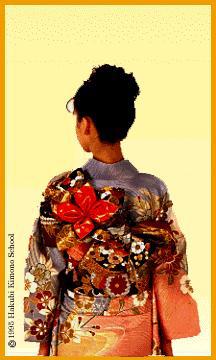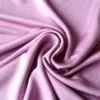Silk was discovered in China around 2600. This was the fourth natural fabric to be discovered, after flax, wool, and cotton. China guarded the secret of silk production tightly, but engaged in extensive trade in silk fabrics along the famous 6,000 mile Silk Road.This road took the form of a caravan tract winding its way through scorching deserts and over treacherous mountains until it reached the Mediterranean Sea. From there it was shipped by waterway to Greece and Rome. Alexander the Great is said to have been the first to introduce silk to Europe.
Despite China's attempt to keep the secret of silk production to itself, the cultivation of silkworms for silk spread to Japan and India. Japan started to pruduce silk in the 3rd century A.D. By the 4th century India began cultivating its own silkworms.
Marco Polo is credited with introducing silk production to Venice, Italy. Marco Polo travelled to China and lived for 20 years at the magnificent court of the Kublai Khan. He was so dazzled by the beauty of the silk at the court that he started a silk industry in Venice. To this day, Italian silks are renowned for their impeccable quality and workmanship.
By the 1500's, France began to cultivate silkworms in the Rhone Valley, and continues to do so today.
Today, China annually produces more than half of the thousands of tons of cocoons used in the world with India ranking second. Japan, the largest supplier of silk in the early 1900's, has switched her primary focus on electronics, cameras etc.
Silk was always considered a fabric for the rich, because only the rich could afford it. Today it has become feasible to own silk even if you are not an heiress or a member of the nobility. Chinese farmers cultivate silk for export. We are seeing more and more silk at lower prices, and a tremendous selection at very reasonable prices.
Silk has always been accepted as the luxury fibre. Today more and more people are realizing that silk is also a naturally occuring miracle fibre.

Silk kimono
Silk is an animal fibre made almost entirely of protein and is naturally hygienic.
The layers of protein produce a very attractive sheen.
Silk's affinity for dyes rich colours like no other fabric.
Silk is the strongest of all natural fibres. A thread of silk is stronger than steel of the same diameter.
Silk is the thinnest of all natural fibres, therefor it is an ideal fabric for summer wear.
Silk holds heat inside the fabric, keeping you surprisingly warm in winter.
Silk is resilient and elastic. It can stretch up to 20% and return to its original size.
Other bonuses of silk, include excellent drape, good sewability, and a unique lustre.
Only silk is silk.





